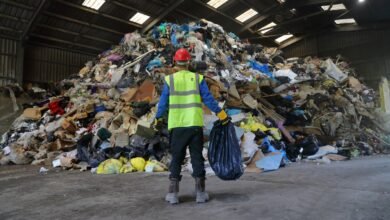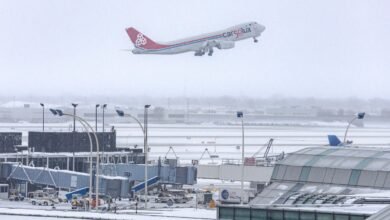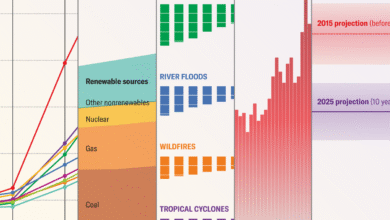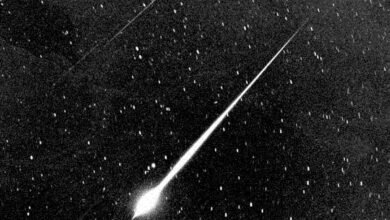
October 28, 2024
3 min read
Wildfires Are Moving Faster and Causing More Damage
A small number of fast-moving wildfires cause almost all the property damage by forcing firefighters to focus on saving lives
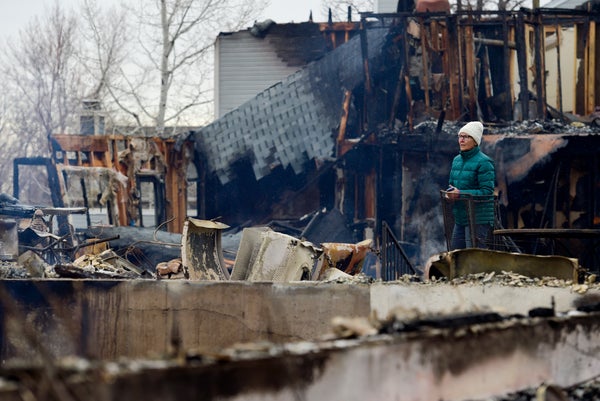
Vicki Matthews, a 23-year resident of Louisville, surveys the damage to the Wildflower condominium complex in Louisville, Colo., destroyed by the Marshall Fire in 2021. Researchers say the wildfire was so destructive because it spread quickly.
Matthew Jonas/MediaNews Group/Boulder Daily Camera via Getty Images
CLIMATEWIRE | The fastest-moving wildfires are by far the most destructive because they force firefighters to focus on saving lives — instead of saving property.
Now, researchers have worse news: Wildfires are growing faster with climate change.
That’s according to a new analysis that used satellite data to examine tens of thousands of wildfires between 2001 and 2020. The researchers found that the fastest moving blazes were responsible for nearly 90 percent of damaged and destroyed homes, despite making up just 3 percent of fires during the period.
On supporting science journalism
If you’re enjoying this article, consider supporting our award-winning journalism by subscribing. By purchasing a subscription you are helping to ensure the future of impactful stories about the discoveries and ideas shaping our world today.
And the phenomenon is accelerating. The paper, published last week in the journal Science, warns that fires are spreading more quickly in the Western U.S. as climate change fuels warmer and drier conditions, posing a growing threat to already at-risk communities near forests and grasslands.
“We’re the first to document this trend,” said report co-author Jennifer Balch, a fire ecology expert and associate professor at the University of Colorado. “The reason why this is so important is because some of our most deadly and destructive wildfires have been incredibly fast, but they’ve also been relatively tiny events” in terms of geography.
“There’s a point when the fire is moving faster than suppression teams can actually work, and they shift from … managing the fire to getting people out,” Balch added.
Take Colorado’s 2021 Marshall Fire. The blaze burned a relatively small area of suburban Boulder County north of Denver, Balch said. But the disaster — fueled by 100-mile-per-hour winds — killed two people and destroyed more than 1,000 homes, making it the most destructive fire in Colorado’s history.
“Speed fundamentally dictates the deadly and destructive impact of megafires,” the researchers wrote.
The study comes as natural disasters pummel communities across the country, forcing property owners, emergency planners and policymakers to rethink how to prepare for extreme weather.
Hurricanes are growing stronger, wetter and intensifying faster as climate change warms the atmosphere, research shows. Scientists said record-breaking water temperatures in the Gulf of Mexico, for instance, were a key driver of Hurricane Milton’s explosive strength earlier this month.
Balch said the new research highlights a major gap in wildfire-related modeling, risk assessment, resiliency initiatives and emergency planning, which have historically focused more on wildfire intensity and size than speed.
“We really do need to shift away from just talking about megafires and the sizes of them, to talking about how fast they move,” Balch said.
The researchers used satellite data to study more than 60,000 fires between 2001 and 2020. By looking at individual pixels within the satellite data, they examined how quickly each fire spread. The researchers highlighted “fast fires” based on how many acres burned each day, and then determined how many structures burned during each event.
The data revealed that “fast fires” were responsible for 89 percent of damaged and destroyed homes during the two-decade period. Yet the fast fires accounted for just 2.7 percent of the more than 60,000 events included in the study.
The data also made clear that fires have started spreading more quickly in the Western United States. When the authors examined the fastest fires in their data set, which grew by more than 4,000 acres in one day, they found that the fastest fires in 2020 grew 2 1/2 times faster on average than they did in 2001. Between 2001 and 2020, the average maximum growth rate of fires in the region has increased by 250 percent.
“With warming temperatures increasing the likelihood of wildfires across the U.S., we would expect to see more fast fire events in the future,” the paper says.
Reprinted from E&E News with permission from POLITICO, LLC. Copyright 2024. E&E News provides essential news for energy and environment professionals.
Source link

